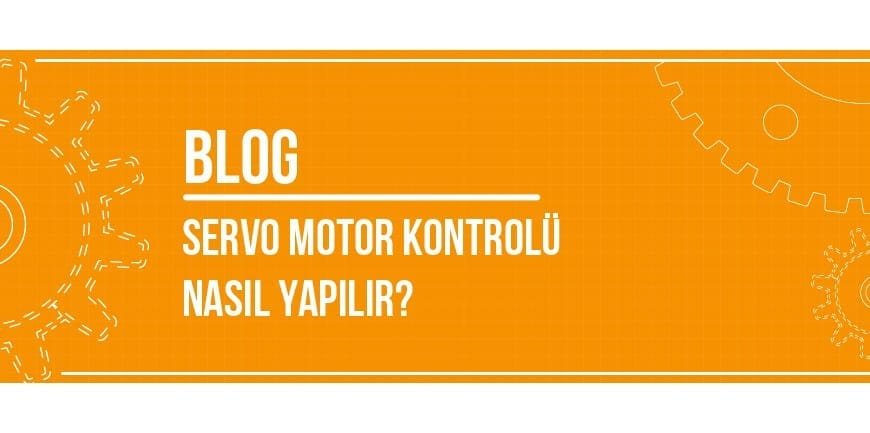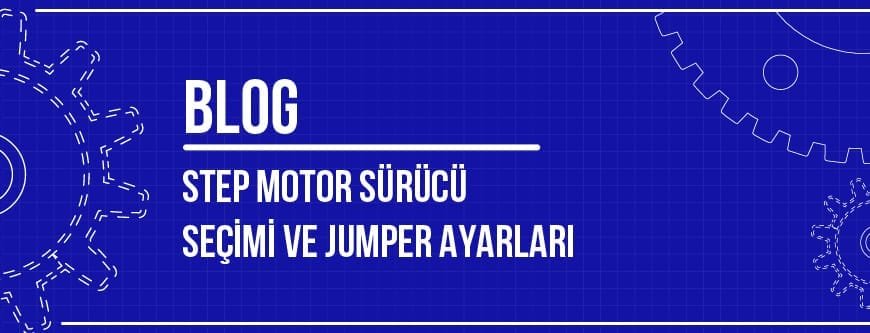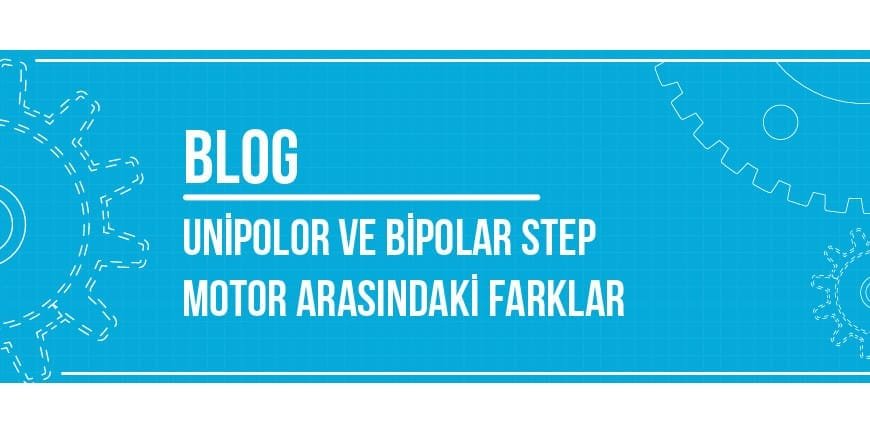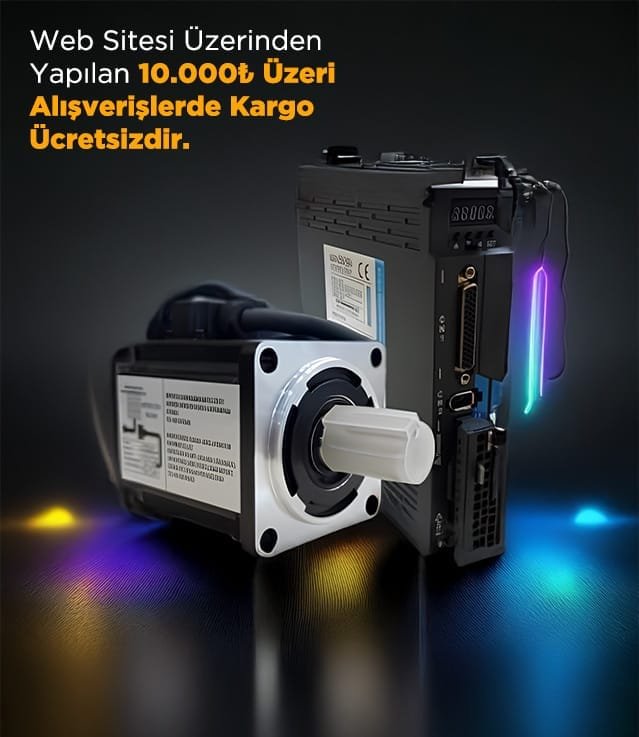
İçindekiler
What is a Stepper Motor? What are the types? and How Does It Work?
There are many questions about stepper motors, which are electromechanical devices. We wanted to prepare a comprehensive blog post addressing frequently asked questions about stepper motors. Throughout the article, we will answer questions such as “What is a stepper motor?”, “What are the types of stepper motors?”, and “How do stepper motors work?” In addition, we will provide information about the structure and control systems of stepper motors. Finally, we will list the factors that determine the prices of stepper motors and provide information about stepper motor prices. We hope this article is useful for you and wish you a pleasant read.
What is a Stepper Motor?
Stepper motors are electromechanical devices that convert electrical energy into physical energy with rotational motion and can change the angular position in steps. Stepper motors, which come in many varieties, can serve different purposes depending on the qualities required for the planned operations. By considering the scope of small and large-scale projects and choosing from among the stepper motor varieties based on the required power factor, high efficiency can be achieved with stepper motors in many projects. We will discuss the details of the varieties of stepper motors, also known as brushless motors, in the course of our article.
Differences Between Stepper Motors and Servo Motors
The fundamental difference between a servo motor and a stepper motor lies in their control mechanisms. Stepper motors operate in discrete steps and complete their control in this manner. Stepper motors do not lose position as long as they are operated at power levels appropriate for their specifications. Stepper motors, which have a balanced operating principle, do not fluctuate. Servo motors should be used instead of stepper motors at points where high power is required. Servo motors, which can operate at high speeds and have a dynamic structure, have significantly high holding torque values. In terms of cost, stepper motors are more affordable than servo motors.
Choosing a servo motor or stepper motor based on performance and power requirements will increase the efficiency of your work. For information about selecting a servo motor or stepper motor, please contact Şahin Rulman.
Stepper Motor Types
Stepper motor types vary depending on the internal structure of the motor. The types of stepper motors are as follows:
• Two-phase stepper motors
• Unipolar stepper motors
• Bipolar stepper motors
• Permanent magnet stepper motors
• Variable reluctance stepper motors
• Single-piece
• Multi-piece
• Linear stepper motors
• Hybrid stepper motors
• Hydraulic stepper motors
How Does a Step Motor Work?
As the name suggests, a stepper motor is a type of motor that moves in steps. Stepper motors without feedback sensors operate easily in open-loop systems, allowing you to perform precision tasks. The steps taken by the stepper motor during operation are determined by angular values. Dividing the number of steps by 360° determines how many steps will be taken during operation. Energy is transferred to the coils via electronic switches. Subsequently, the part called the rotor stands opposite the energy-carrying coil mechanism. Pulse signals are transmitted to the coils according to how much the motor needs to be moved. On the other hand, the rotation angle varies in these motors. Stepper motors are preferred in projects where position control is required. Indeed, adjusting them according to your needs during operation is important when using this type of motor.
Since it cannot be controlled directly, a stepper motor driver must be used to control the stepper motor. A stepper motor driver must be connected to the computer environment to control the motor’s torque, speed, and position values and to drive the stepper motor. You can add precision to the stepper motor with the stepper motor driver. The settings of the stepper motor driver vary depending on the motor and driver model, and you must make specific adjustments according to your model.
Stepper Motor Specifications
Another consideration for those looking to purchase stepper motors is the technical specifications of stepper motors.
• Stepper motors are classified by different sizes (e.g., size 17).
• The speed of stepper motors can be adjusted as desired before the motor starts running. However, once the motor starts running, the speed remains fixed and does not change.
• Control over stepper motors can be enhanced using stepper motor drivers.
• In the long term, it provides cost savings for the owner. Indeed, since the engine structure is not complex, they are both easy to maintain and long-lasting.
• They have been developed to be compatible with digital control systems.
• Varieties catering to different needs are available.
Applications of Stepper Motors
In this section of our article, we will seek to answer the question, “Where are stepper motors used?” Recently, with the development of microprocessor technologies and increasing digitalization, the importance and areas of application of stepper motors have increased. Stepper motors, which can be used in all projects requiring step control, regardless of size, are particularly preferred in areas where position control requires high attention. The characteristics of stepper motors, which come in different types, should be chosen according to the area of use. The main areas of use for stepper motors, which offer many benefits to the user, are listed below:
• Food packaging industry,
• Medical devices,
• CNC machines,
• Printers,
• Robots,
• Factory automation,
• Plotters,
• Floppy disk drives,
• Card readers, and similar fields.
Advantages of Stepper Motors
Stepper motors, preferred for various purposes in many industries, offer numerous advantages to users. In this section of our article, we will list the advantages offered by stepper motors for you.
• Unlike servo motors, they do not require feedback. Control can be provided in an open-loop manner.
• There is no position error in the movement of stepper motors.
• Since they are manufactured in accordance with digital control systems, their controls can be provided by elements such as computers and microprocessors.
• Since they have a simple structure rather than a mechanically complex one, they do not cause significant time or financial loss for maintenance.
• They can be operated many times without causing any defects.
The Structure of Stepper Motors
The basic structure of a stepper motor consists of a rotor, stator, and bearings. The primary function of the bearings is to ensure that the shaft connected to the rotor moves more freely. The stator, another component of the stepper motor structure, stands out due to its multiple poles. The number of these poles varies depending on the type of motor, but on average, there are 8. On the other hand, the polarity of the stator is controlled by an electronic switch. After control is established, the south and north poles of the stator are rotated. The south pole of the rotor and the north pole of the stator are in sequence.
The magnetism of the rotor is created using permanent magnets or external excitation techniques. During this process, continuous magnetism can be achieved. The average stator field begins to rotate through steps. Subsequently, the rotor continues this process with approximately the same steps. To achieve better selectivity, small teeth are created on the rotor and stator parts of the stepper motor. However, care must be taken to ensure that these teeth do not touch each other.
The terms rotor, stator, and bearing, which are fundamental components of the structure of stepper motors, are also referred to by different names in the literature. The stator is also called the inductor, and the rotor is also called the armature. Therefore, when researching or learning about the fundamentals of stepper motor structure, encountering these other names should not confuse you. The rotor, which is one of the components that make up the structure of a stepper motor, consists of three components. These are called rotor 1, rotor 2, and permanent magnet. When the rotor is magnetized in the axial direction, the polarity of rotor 1 is reversed, causing rotor 2 to become polarized towards the south.
Stepper Motor Control Systems
Stepper motors convert the signals they receive into rotational motion, enabling them to rotate in the desired direction and angle. The step angle of a stepper motor is calculated based on 360°. So, if you want to determine how many degrees each step of a stepper motor is, you need to divide the full rotation angle by the number of steps. A stepper motor with 36 steps advances in 10° increments per step. So, we can calculate 10° from 360° / 36.
Stepper motors operate differently from other types of motors. Each stepper motor has five output terminals. Four of these terminals are separate, while one is known as the common terminal in the stepper motor. To identify the common terminal on your stepper motor, you must take a measurement with an ohmmeter. Another difference from other motor types is that they are controlled by special stepper motor drivers. They cannot operate automatically when directly supplied with power. They are operated by issuing the necessary commands using a stepper motor driver suitable for the stepper motor’s characteristics.
When controlling stepper motors, attention must be paid to the pulse currents transmitted. The pulse frequency is directly proportional to the operating speed of the stepper motor. The more frequently you send pulses to the stepper motor, the more you increase its speed. You should also pay attention to the sequence of these currents. Because during current application, if a current value is not sent, the motor will take the previous value, which causes the motor to brake itself.
Things to Consider When Selecting a Stepper Motor
Stepper motors respond to sudden start-stop movements with an average value of 0.3 seconds. For more abrupt start-stop movements, we recommend using an encoder-equipped stepper motor or a servo motor. Again, the Nm value of the selected stepper motor helps increase the hardness of the start-stop. Incorrectly selected motor force will result in position loss and pulse skipping during start-up and stopping. When selecting a stepper motor, since there is no feedback with an encoder in stepper motors, a motor that is at least 1.5 times larger than the required force should be selected. Although friction forces are low initially because the mechanical parts are lubricated and dust-free, friction will increase over time due to dust and rust accumulation in the environment where the machine is used. This will eventually lead to pulse skipping and post-sales service issues.
Stepper Motor Prices and Factors Affecting Price
Before discussing the prices of stepper motors, it is worth mentioning the main factors that determine their prices. Among these factors, the most important is the type of stepper motor. Other factors that affect the prices of stepper motors include characteristics such as holding torque, NEMA rating, current, and flange size. You should carefully analyze the values of stepper motors to ensure they meet the power requirements of your project and purchase stepper motors accordingly.
Stepper motor torque values range from 0.17 Nm to 40 Nm. According to NEMA ratings, the Nm values are NEMA 14, NEMA 17, NEMA 23, NEMA 24, NEMA 34, NEMA 42, and NEMA 52. NEMA ratings also vary depending on the flange size. All these details is among the factors that determine stepper motor prices.
We have reached the end of our blog post about stepper motors. Throughout this article, we have tried to answer all your questions about stepper motors. If you have any questions about stepper motor types and prices, please feel free to contact us. We wish you a good day.
Diğer Blog Yazılarımız








